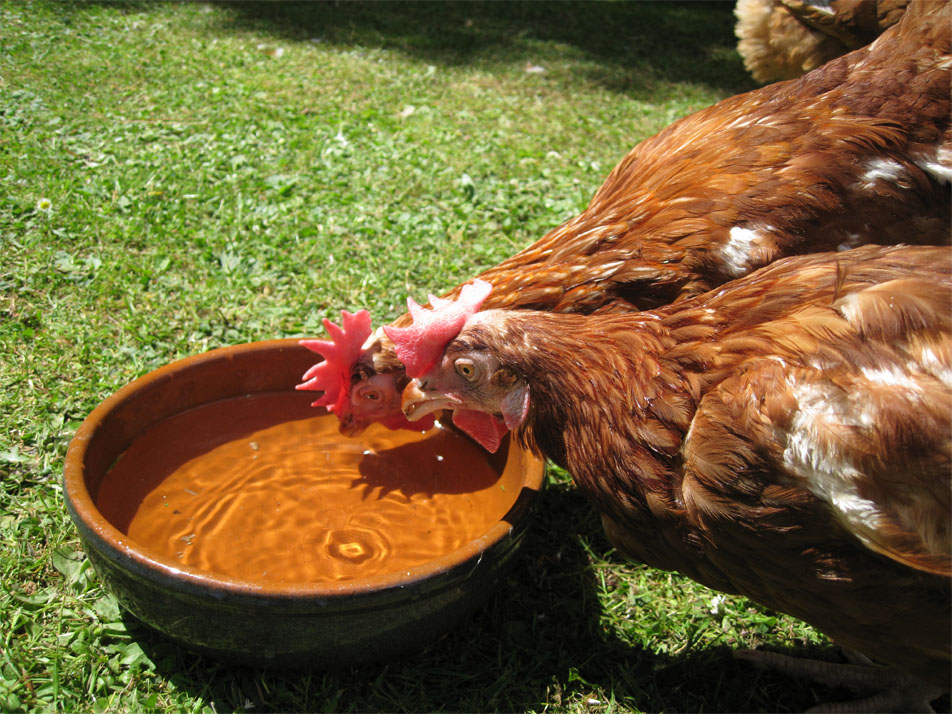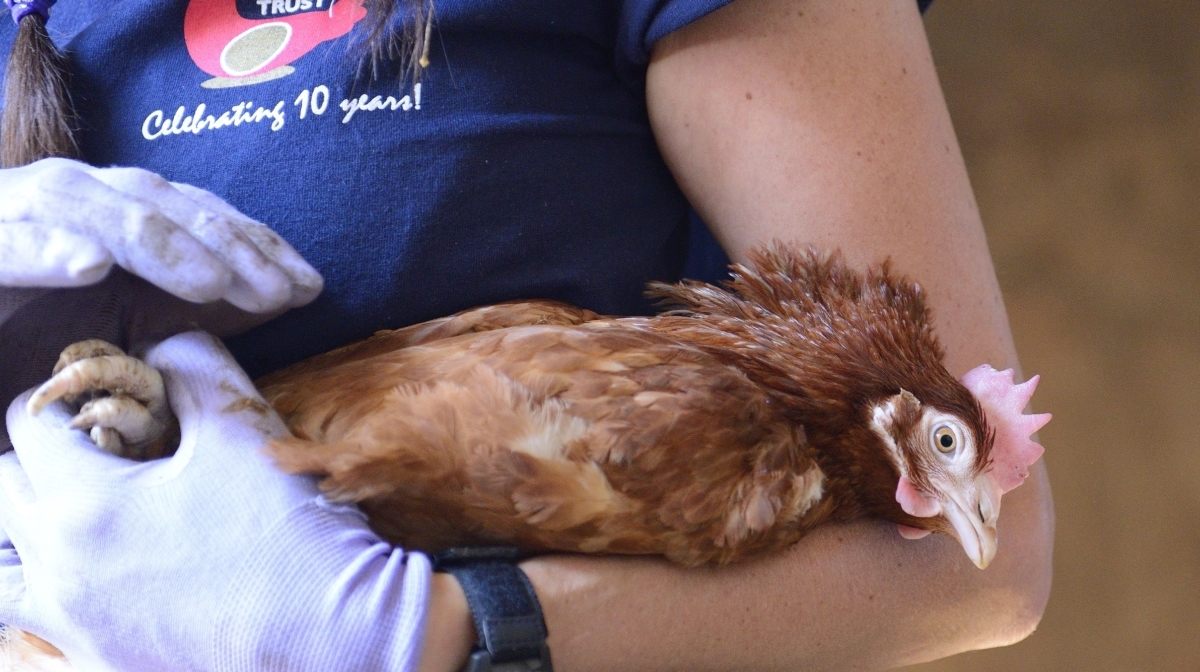Hens are now the sixth most popular pet in the UK, and re‐homed commercial hens (ex‐battery hens or exbats as they are known) are the ideal starter hen for first‐time hen keepers. Often described as cats and dogs with feathers, they make friendly and endearing pets. Ex‐bats do, however, have their own specific issues, and sometimes knowing what is normal can help to establish the severity of a presenting condition. In this blog, BHWT takes us through the most common illnesses of pet hens to help you along.
As there are now many more ex‐bats kept as pets, most practices will be seeing them; this does not mean they are more prone to illness than other hens, only that they are more popular, with 50,000 being re‐homed as pets every year by the British Hen Welfare Trust (BHWT).
Commercial hens
All commercial hens receive a raft of vaccinations through a spray‐mist system in the first few days of life. This usually includes cover for:
- Marek’s disease
- infectious bronchitis
- coccidiosis
- Gumboro disease
- Newcastle disease
- salmonellosis
- infectious avian rhinotracheitis
- infectious laryngotracheitis
- egg drop syndrome
Commercial hybrid laying hens are selectively bred to produce eggs rather than meat, and for this reason, they carry very little breast muscle. Don’t expect a recently re‐homed ex‐bat to look anything like the chicken you see on the supermarket shelf (although some do arrive with very few feathers)!
Hens are prey animals and therefore hide signs of illness so as not to appear weak and vulnerable. Conversely, they have excellent powers of recovery and can often bounce back quickly with minimal intervention, although this is currently not a widely held view within the veterinary profession.

A to Z of common illnesses of hens
Ascites
Ascites (also known as “water belly”) is caused by a build‐up of fluid usually caused either by poor ventilation or respiratory disease; both problems put pressure on the heart leading to failure. Liver and kidney disease are also possible causes of ascites. This is less common with hens from the new, enriched cages and hens will often walk off a water belly with exercise given time.
Bumblefoot
Hens often look like they are wearing carpet slippers. Their feet swell due to a bacterial infection, which can be caused by a puncture wound or perch injury that introduces infection. Hard pus may be surgically removed and we have witnessed some hens improve with simple exercise.
Crop conditions
A normal full crop should be tangerine‐sized and you should be able to feel food particles freely moving inside. Food is stored here for up to six hours, where it is softened and fermented.
The crop can become impacted with long fibrous grass, foreign objects and food. If you do not remove this obstruction, the hen will slowly starve to death. Mild cases can be managed with massage and liquid paraffin, but surgery may be necessary.
Sour crop occurs when the crop fills with a characteristically foul‐smelling fluid which often regurgitates when gentle pressure is put on the crop. Thorough washing out and instilling probiotics can be a successful treatment and/or the use of oral miconazole gel. Home remedies (such as a single dose of 3 ml of brandy) that concentrate on killing off the yeast have also proven successful.
Diarrhoea/droppings
Expect a laying hen to produce 100–150 g of droppings every day. Normal droppings should be wellformed and dark brown with a white urate cap. Most hens defaecate 12–16 times over a 24‐hour period. Additionally, a normal, healthy hen will produce a caecal dropping once or twice daily – this looks rather like caramel sauce and is completely normal.
Ears
Hens with ear infections may exhibit drunken or staggering behaviour. Hens’ ears are well‐hidden under a flap of dense feathering just behind the eye. The ear canal should be a clean, dark hole with no debris.
Egg peritonitis
A hen with a swollen, hard abdomen and a penguin‐like stance is normally a “blind layer”. In this condition yolk builds up in the abdomen and creates a perfect culture medium for bacteria. If this only happens sporadically, the hen can reabsorb some of the yolk. Antibiotics will help to keep bacterial infection under control and prevent egg peritonitis, but you should take the hen off lay by putting them on a corn only diet.
Endoparasites
The best known effective wormer for hens is Flubenvet. It treats roundworms, hairworms and gape worms, but is less effective against tapeworms.
Ectoparasites
External parasites in hens can cause:
- anaemia (pale combs and wattles)
- listlessness, itching and restlessness
- weight loss
- reduced egg production
Parting the feathers around the vent area and checking under the wings will usually demonstrate the presence of lice.
Northern fowl mites are around 1 mm in size, grey and turn red when feeding; people often confuse them with red mite although they cannot live longer than 10 days off the hen. The vent and tail areas are their favourite haunts. You can treat these mites with Ivermectin.
Crusty white deposits at the base of feathers and feathers that fall out easily can be signs of depluming mite. This mite produces live young which burrow into the skin and cause irritation and oozing. Often the hens have a characteristic square shape to the feathers on their heads which produces an anxious appearance. Once seen, never forgotten! This mite is very difficult to treat.
Nutrition
Ex‐bats are sometimes poorly feathered when they leave commercial farms. To encourage feather regrowth and strong eggshells it is vital you feed hens a suitable feed to provide the correct levels of calcium and protein.
Hens should never be fed on kitchen scraps – it is illegal unless the household is vegan – and they are not waste disposal systems! For this reason, a corn‐only diet is not suitable long term (unless trying to take the hen off lay). The BHWT recommends the Allen & Page Smallholder range.
Prolapse
Older hens lay progressively bigger eggs and this can sometimes cause a prolapsed vent. Trying to push it back in is usually a waste of time.You should isolate the hen to avoid damage to others. You should clean the prolapse and apply a soothing cream, such as Dermisol. The prolapse will usually shrink back if left alone. A corn‐only diet should encourage her to lay smaller eggs.
Red mite
This is the scourge of all hen keepers. This mite lives in the environment and feeds from the hen at night. The mites are grey and only just visible to the naked eye – they become red after a blood meal. Red mites can become resistant to many of the over‐the‐counter treatments available.
Scaly leg
This mite burrows under the scales on the leg and causes irritation and the scales to lift. Treatment is simple: suffocate the mites with a thick layer of Vaseline® or Swarfega® massaged into the leg. Swarfega® is also a cleanser of which you can use for the gentle removal of damaged scales, which will fall off in time, and new healthy scales will re‐grow.
Uropygial gland
The little lump at the base of the hen’s tail is the uropygial gland. This is the hen’s preen gland which produces oil to keep her feathers in tip‐top condition.
Vent gleet
A white, sticky, smelly discharge which sticks to vent feathering points towards a Candida infection. Recently re‐homed ex‐bats will have been living without a cockerel so the cause is most likely a yeast infection. Routine bathing of the vent area using Epsom salts solution followed by regular application of Canesten will alleviate the worst of the symptoms. You should also give Apple cider vinegar and probiotics by mouth.

